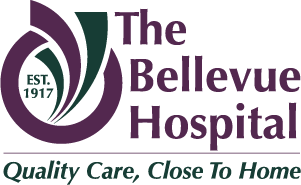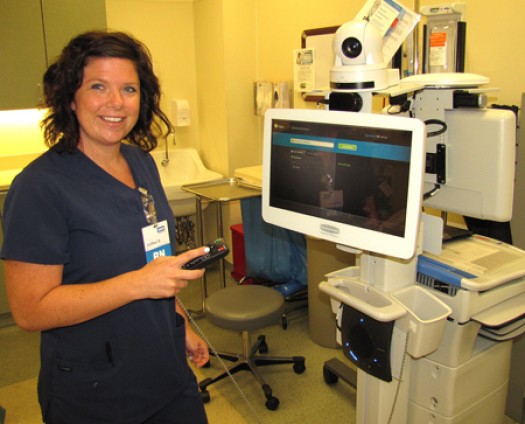“Time is brain.”
That is the motto of healthcare providers concerning stroke patients. The quicker help can be administered to a stroke patient, the more likely that patient is to make a nearly full recovery.
On June 18, The Bellevue Hospital (TBH) joined forces with ProMedica Toledo Hospital to implement a “telestroke program” at the local facility. Working in conjunction with Toledo Hospital’s Primary Stroke Center, TBH medical staff employees now have the ability to electronically set up a “live remote” to Toledo neurologists using a state-of-the-art E-Care Mobile Cart.
“This is yet another layer of care we can offer to a stroke patient,” said Kelly Joseph, ProMedica Regional Stroke Coordinator. “Patients who come in to TBH and present with acute neurological symptoms can be connected face-to-face with Toledo Hospital neurologists to determine the proper care for the patient, and where that patient needs to be, whether transported to another facility or admitted right there in Bellevue.”
Joseph explained that it takes nine minutes or less for this process to occur once a patient presents to the Emergency Department with stroke-like symptoms. “So far, we have done over 230 telestroke procedures. This is a best-practice level of care that is helping to save lives,” added Joseph. “The neurologists can access the E-Care Mobile Cart data through their iPad, iPhone, or computer. This helps to take the burden off the Emergency Department doctors as well, knowing that they have stroke experts just a face-time call away.”
Joseph also noted that many more stroke patients can be helped if they would simply reach out for help once symptoms of a stroke are noted. “Too many times people sit at home and think ‘the pain will go away’ or ‘the numbness will go away.’ Then three days later, they finally make it to a medical facility. By that time, it is probably too late to reverse any stroke affects,” said Joseph.
She said to use the FAST exam when trying to decide if you are exhibiting stroke symptoms: Facial weakness; Arm weakness, especially on one side of the body; Speech changes or difficulties; and Time, the last time the patient was well since interventions are best achieved within a 12 hour timeframe from the last known “well time.”
Michelle Garcia, RN, CEN, Leader of TBH’s Emergency Department, explains that a “stroke alert” will be paged overhead at TBH when a patient presents with stroke-like symptoms. “This is not just for the Emergency Department. Any Registered Nurse or physician in any department may page an alert if a patient has sudden neurological changes.”
Garcia noted that once an alert is paged overhead, a healthcare team will assemble, including a CAT Scan technician, Lab phlebotomist, Lab tech, Cardiopulmonary tech, and ER nurses. “All of our nurses in the ER have received NIH stroke scale certification through the American Stroke Association,” added Garcia.
She noted that with any stroke patient, the first 12 hours are the most critical. The E-Care Cart is mobile and can be taken to any department in the hospital, saving valuable “time and brain.” The cart is also checked each morning with a live call to Toledo Hospital to make sure everything is in working order. To date, Toledo Hospital has set up E-Carts in Maumee St. Luke’s Hospital, Fostoria Hospital, and now TBH.
To date, Toledo Hospital has set up E-Carts in Maumee St. Luke’s Hospital, Fostoria Hospital, and now TBH.
For additional information on TBH’s telestroke program, contact Michelle Garcia at 419.483.4040, Ext. 4685.

